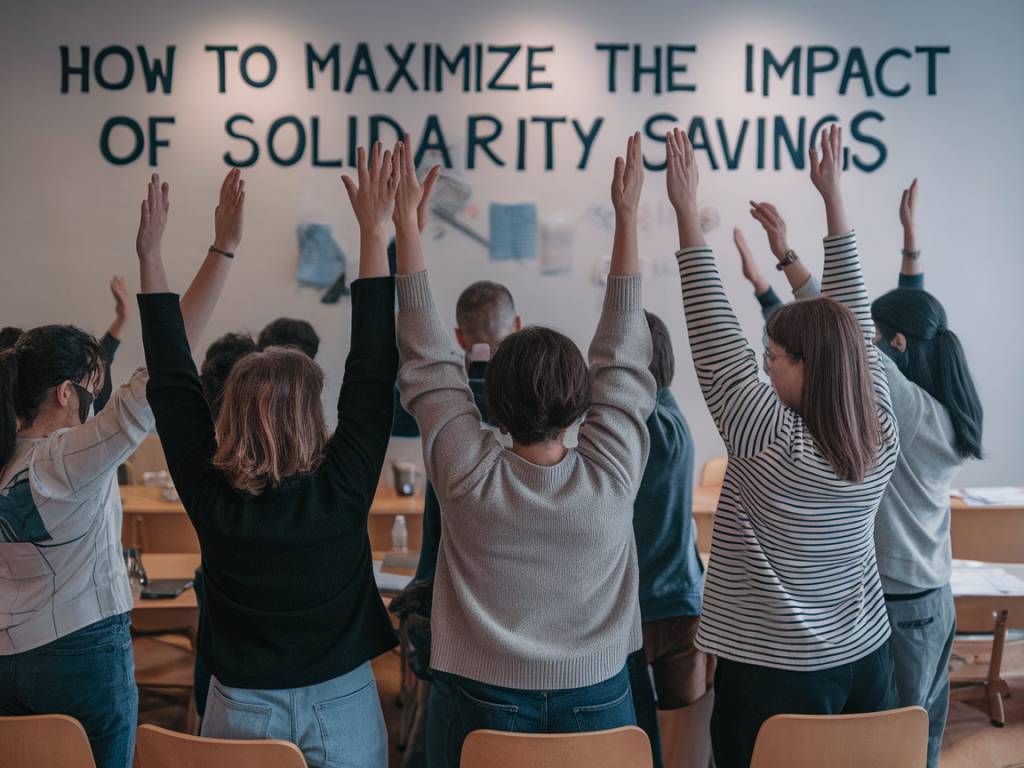How to access low-interest loans for sustainable enterprises
Accessing low-interest loans for sustainable enterprises is a crucial step for any business looking to minimize its environmental footprint while securing the necessary funds to grow. This article will provide you with practical advice, concrete examples, and relevant case studies to help you navigate this complex landscape. By the end of this guide, you will be equipped with actionable steps to secure the best possible financing for your sustainable enterprise.
Understanding Sustainable Enterprises
A sustainable enterprise aims to minimize its negative impact on the environment while maintaining profitability and social responsibility. These businesses often focus on areas like renewable energy, waste reduction, water conservation, and ethical sourcing. Key concepts related to sustainable enterprises include the triple bottom line, which emphasizes the importance of balancing profit, people, and the planet.
The Importance of Low-Interest Loans for Sustainable Enterprises
Low-interest loans can provide the financial flexibility needed to invest in sustainable practices without burdening the business with high repayment costs. These loans are often offered by government programs, non-profits, and specialized financial institutions to encourage the adoption of eco-friendly business practices.
Research Available Loan Programs
There are numerous loan programs specifically designed to support sustainable businesses. Here are a few notable examples:
- Small Business Administration (SBA) Green Loans: The SBA offers various green loans through its 7(a) and 504 programs, focusing on energy-efficient projects and renewable energy investments.
- Green Bonds: Financial institutions and government agencies issue green bonds to fund environmentally beneficial projects. These bonds typically offer lower interest rates and favorable terms.
- Development Finance Institutions (DFIs): DFIs like the International Finance Corporation (IFC) provide low-interest loans to sustainable enterprises in developing countries.
Meet Eligibility Criteria
Each loan program has specific eligibility criteria that businesses must meet. Common requirements include:
- Business Plan: A detailed business plan outlining your sustainable goals, projected impact, and financial projections.
- Environmental Certifications: Certifications such as LEED, Energy Star, or B Corp certification can strengthen your loan application.
- Financial Health: Demonstrating solid financial health through tax returns, balance sheets, and profit and loss statements is essential.
Prepare a Robust Loan Application
Once you’ve identified a suitable loan program and met the eligibility criteria, the next step is to prepare a comprehensive loan application. Here are a few tips to enhance your application:
- Detailed Financial Projections: Include realistic financial projections demonstrating how the loan will contribute to your sustainable business goals and overall profitability.
- Cost-Benefit Analysis: Conduct a cost-benefit analysis to show the long-term financial and environmental benefits of your sustainable initiatives.
- Clear Sustainability Plan: Outline a clear and detailed sustainability plan, including specific targets and how you plan to achieve them.
- Strong Supporting Documents: Gather all necessary supporting documents, such as tax returns, balance sheets, and proof of environmental certifications.
Real-World Example: XYZ Company
To illustrate the process, let’s consider XYZ Company, a medium-sized business aiming to transition to renewable energy sources. Here’s how they secured a low-interest loan:
XYZ Company identified the SBA’s 504 Green Loan Program as the most suitable option. They prepared a robust business plan outlining their goal to install solar panels, which would reduce their energy costs by 40% annually. XYZ Company also highlighted their financial health and previous environmental certifications. After thorough preparation and submission of a strong loan application, XYZ Company successfully secured a low-interest loan, enabling them to install the solar panels and achieve their sustainability targets.
Leverage Grants and Incentives
In addition to low-interest loans, grants and incentives can further reduce the financial burden of implementing sustainable initiatives. Governments and non-profits often offer grants to encourage sustainable practices. Examples include:
- Federal Grants: Programs like the Department of Energy’s Small Business Innovation Research (SBIR) provide grants for innovative sustainable projects.
- State and Local Incentives: Many states and local governments offer incentives for businesses adopting renewable energy and energy-efficient practices.
- Tax Credits: Both federal and state tax credits are available for investments in renewable energy and energy-efficient improvements.
Seek Expert Advice
Navigating the landscape of low-interest loans and grants can be complex. Seeking advice from financial advisors specializing in sustainable enterprises can be invaluable. These experts can help you identify suitable loan programs, prepare strong applications, and leverage available incentives, significantly increasing your chances of securing favorable financing.
Monitor and Measure Impact
Once you’ve secured financing and implemented your sustainable initiatives, it’s important to monitor and measure their impact. Regularly assessing the financial and environmental benefits will demonstrate the success of your efforts, helping you maintain eligibility for future funding opportunities and reinforcing your commitment to sustainability.
Case Study: ABC Manufacturing
ABC Manufacturing, a small business specializing in eco-friendly packaging, wanted to reduce its carbon footprint further. They identified a federal grant program that offered funding for innovative sustainable projects. ABC Manufacturing collaborated with a financial advisor to prepare a strong grant application, highlighting their commitment to sustainability and the potential impact of their project. Their application was successful, allowing them to implement a new energy-efficient manufacturing process that reduced their carbon emissions by 30%.
Final Recommendations
For businesses looking to access low-interest loans for sustainable enterprises, the key steps include:
- Research Loan Programs: Identify and understand the various loan programs available for sustainable businesses.
- Meet Eligibility Criteria: Ensure your business meets the specific eligibility criteria for the loan program you are interested in.
- Prepare a Strong Application: Develop a comprehensive loan application with detailed financial projections, sustainability plans, and supporting documents.
- Leverage Grants and Incentives: Seek additional funding opportunities through grants and incentives to complement your loan.
- Consult Experts: Engage with financial advisors specializing in sustainable enterprises to navigate the loan application process effectively.
- Monitor Impact: Regularly assess and report on the financial and environmental impact of your sustainable initiatives to maintain transparency and accountability.
By following these steps, you can successfully access low-interest loans and other financial resources needed to invest in sustainable practices, ensuring your business not only thrives but also contributes positively to the environment and society.



